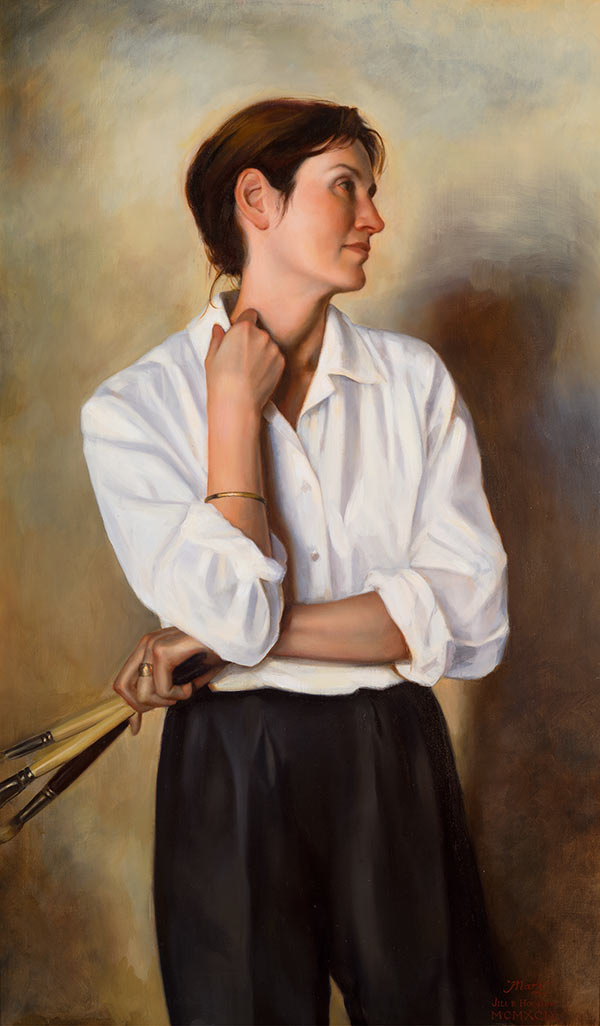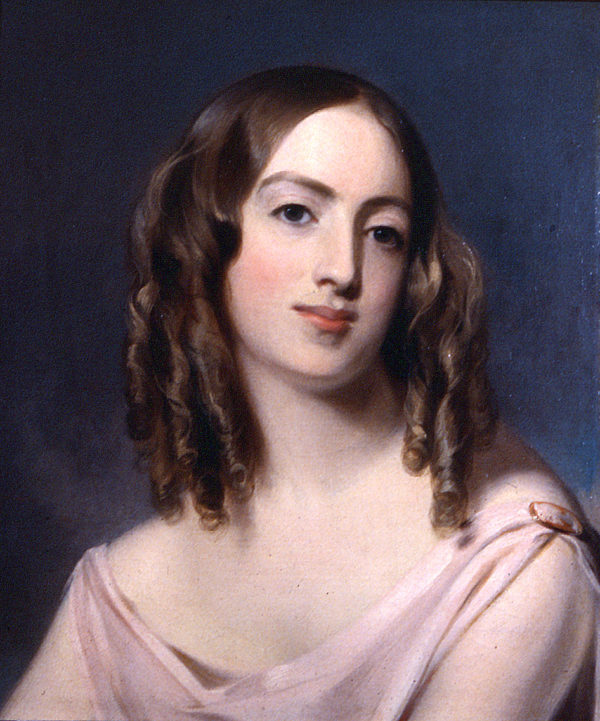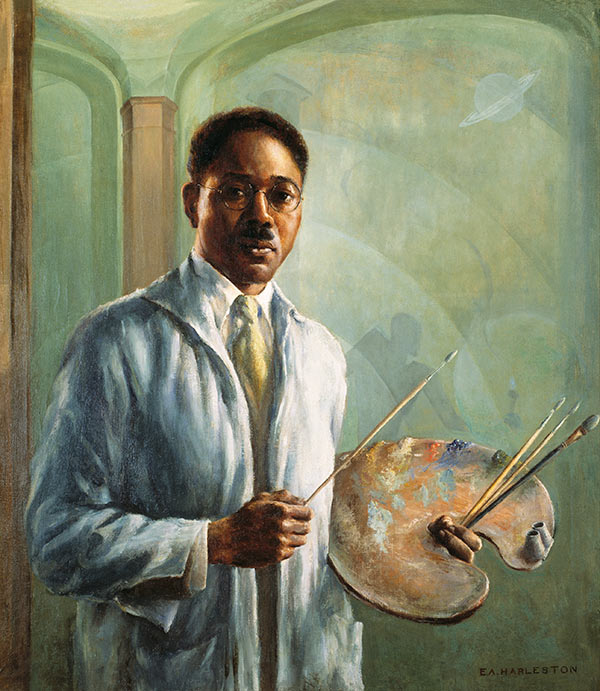In 2016, the Gibbes received two incredible gifts to the permanent collection: a portrait of Mary Jackson by Mary Whyte and a portrait of Mary Whyte by Jill Hooper. The paintings capture deep respect shared among fellow artists. They are beautiful portraits of beautiful women who have helped shape the Charleston art community over the past thirty years. I knew I wanted to display the paintings together, and with that thought, an exhibition idea was born. Why not organize an exhibition focused on this unique form of portraiture?

Artists Painting Artists features paintings dating from the mid-nineteenth century to the present day. Standing in the gallery, I imagine a conversation through time among the artists and sitters represented in the exhibition. Would Alfred Hutty marvel at Mary Whyte’s skill with watercolor? What pearls of wisdom would Thomas Sully share with Jill Hooper? And what would Charles Fraser think of the miniature portraits displayed in Gallery 5? Whatever the conversation, I imagine they would share a mutual understanding of the time, dedication, and sacrifice required to become a professional artist.

Each portrait captures a unique relationship between artist and sitter. The nineteenth-century paintings by William Wilson and Thomas Sully reveal social connections among local artists. Twentieth-century portraits by Edwin Harleston, Alfred Hutty, and others document relationships between students and teachers during the Charleston Renaissance period. And William Halsey’s portrait of Corrie McCallum captures not only a relationship among artists but also a relationship between husband and wife.

Thematic exhibitions, such as this one, allow viewers the opportunity to draw comparisons among paintings from different time periods. To me, this is an exciting way to study art history and to examine the Gibbes collection in new ways. And that is what makes my job so great: learning something new every single day.
—Pam Wall, curator of exhibitions, Gibbes Museum of Art
Top image: Mary Jackson, 2002, by Mary Whyte (American, b. 1953); watercolor on paper; 32 ¼ x 40 ¼ inches; Gift of Cathy and Ben Marino; 2016.005
Published August 18, 2017

